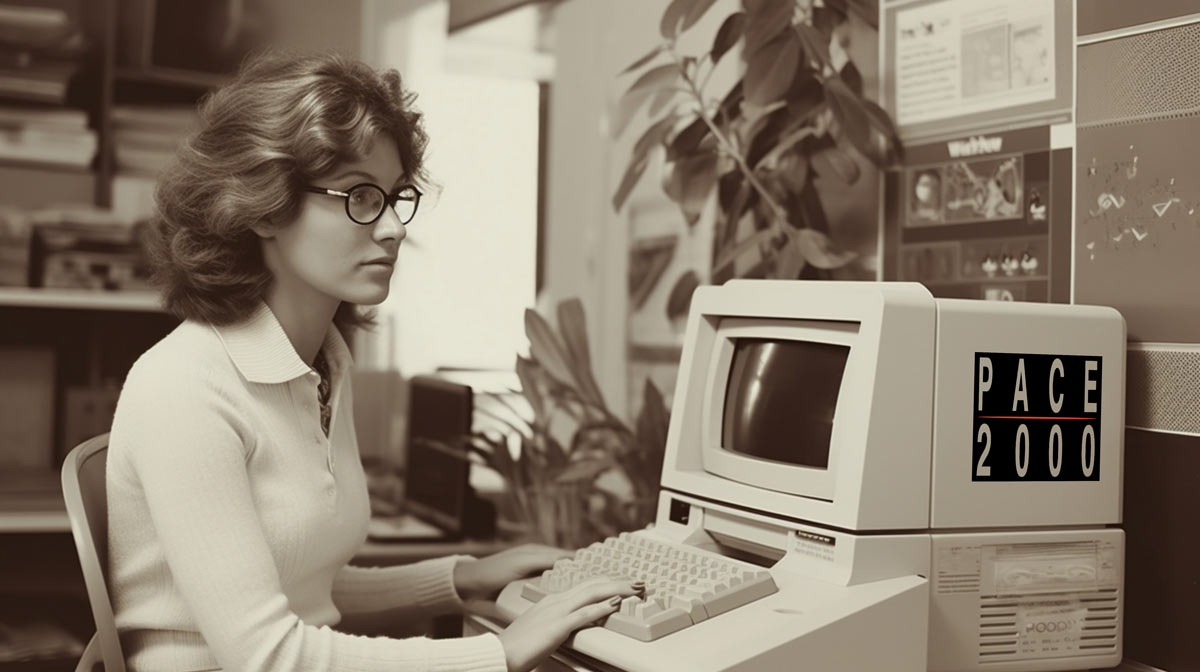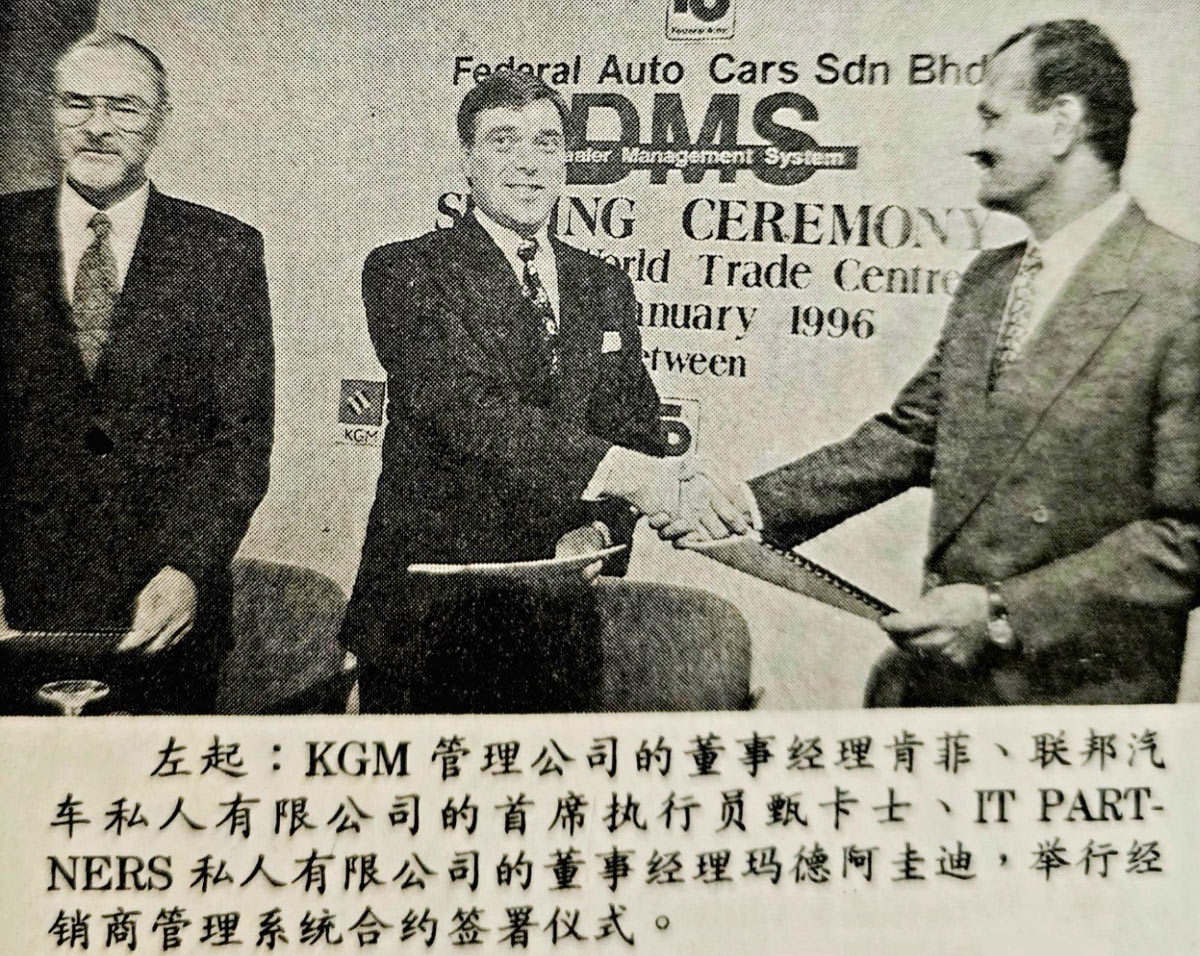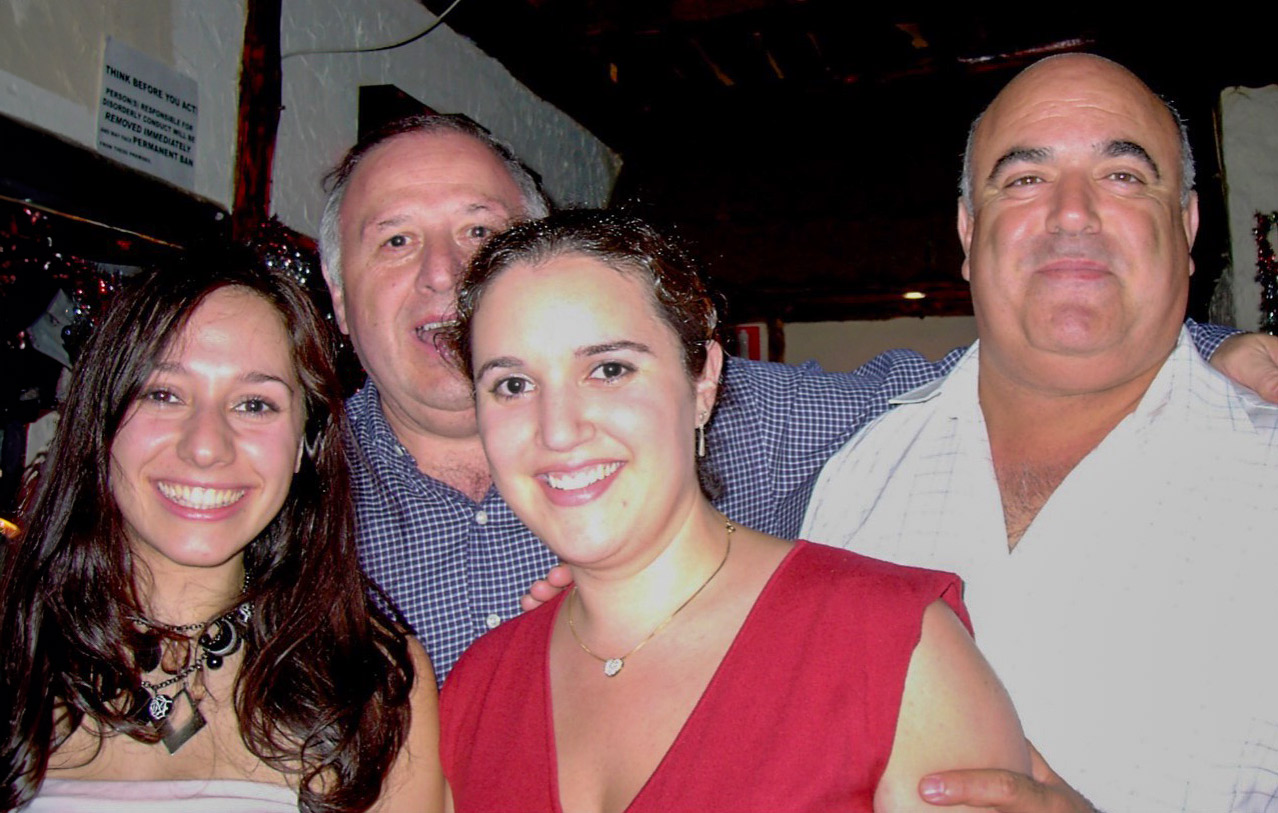
I’d worked for three companies since my arrival in Australia in 1983, and they’d all become insolvent. Was I a manifestation of the albatross in Coleridge’s Rhyme of The Ancient Mariner? I’d noticed a few raised eyebrows among contacts in my business network and couldn’t afford to let it happen again.
My accountant Michael Damianos suggested we have a chat.
I had met Michael three years earlier in the Bull Frog restaurant in Carlton? The occasion was a periodic get together of a group of Australians and Australian born Greeks who’d been close friends since primary school. I was there because Lee was part of the group.
Michael was managing partner of Hill Innes and Dooley, a management accounting practice. The firm had an ancillary bureau service serving clients from an in house minicomputer. He put a proposition to me. “We’ve got some good IT people and good infrastructure here, why don’t you join us and help establish a computer solutions company?” I looked around their beautiful premises. “Can I have an office?” He nodded. “What about a car park?” He nodded again. I was hooked. With the important stuff out of the way we hammered out the remaining details and a successful 35 year business partnership was consummated with a handshake.
Michael and I remain friends to this day, we are semi-retired and meet weekly for a coffee in Carlton. Just 2 old blokes reminiscing about the good old days, the world’s problems, and reflecting on our growing families. We may have engaged in one or two raised voice conversations over the years but in all the time we’ve known each other we’ve never had an argument.
We decided to use my registered business name KGM Management for the new enterprise. It was important to present it as a separate entity to the accounting firm and also, as I was bringing my established customers onto the books it would demonstrate some continuity in our relationship.
Some years before, HID had won a contract with Toyota Australia to write a Dealer Management System for their retail franchisees. It also had to interface with Toyota’s distribution network. The system was called HIDAS, (HID Accounting System,) and there were a number of large Toyota dealers across Australia relying on HIDAS to run their businesses. These would represent an opportunity for KGM Management further down the track to convert to a more affordable platform.
Another important element in the new enterprise was HID’s Computer Services Manager, Frank Maiolo. Frank’s family had immigrated to Australia from Calabria when he was 14 years old. He spoke no English when they landed but with his off the charts intelligence it took him no time to adapt to his new country, and to graduate with finance, accounting, and computer science qualifications. He went on to pursue what was to become a stellar career in IT.
I’m proud to say that on that day in the summer of 1988, KGM reinvented itself. The main protagonists would be an unlikely group of three people who worked together to achieve great things. Responsibility for business development would lie with me, a New Zealander in a mid-life crisis. The computer services expert was Frank, an ethnic Italian, and Michael an ethnic Greek, was in charge of all matters financial.
PACE 2000
The revitalised KGM was ready for business. I’d re-employed Donna Carter who had worked so well with me in my Intelligence days. Donna could attend to account management of my CBA customers who’d stuck with me over the years and she could also sell software to oil industry customers. Frank had written an accounting package for service stations called EKW. HID were supplying accounting and management services for more than 600 service stations throughout Australia so it was worthwhile exploring the opportunity to convert these clients onto a computerised system.
The prime target however was the more substantial Automotive dealer market. It had been 10 years since HID had won the Toyota Dealer Management System (DMS) contract. There had been significant sales success against stiff opposition in the early years, but lack of marketing effort in later years had seen the interest in HIDAS fall away while market competitors continued to mop up. Technology had moved on, however, and we saw an opportunity for KGM to re-enter the dealer market by promoting the price advantage afforded by PC networking technology.
Up until now HIDAS had been installed on Data General Minicomputers. A typical implementation of a file server with associated printers and terminals had an entry level of $150,000 to $250,000.
Shortly after I teamed up with Michael, Frank experimented with converting the HIDAS application from COBOL to a new framework called MICRO FOCUS COBOL. This was touted as executable on PC networks but there were issues and we nearly lost a large dealership customer because of its unreliability. We put our heads together and I asked Frank if he was up for managing the development of a fully functional DMS in the Dataflex language. Frank smiled, I could tell by his demeanour that nothing would please him more. Then he said, “But it won’t be cheap; we’ll have to convince Michael”. Michael needed no convincing, and I breathed a sigh of relief because being first to market would give us an advantage. Best of all, Frank would have to worry about the intricacies of the design process and Michael would have to worry about how we’d pay for it. All I had to do was worry about what to do with the money we’d make!
We increased our programming staff and set out on the hazardous endeavour of producing a new DMS. We decided to name it PACE 2000 in recognition of the forthcoming millennium.
Warning. This paragraph contains computer speak! Writing a DMS is a risky process and documented examples abound of companies burning small fortunes on failed attempts to bring a new DMS to market. It takes a full ERP system to run a dealership. (ERP stands for Enterprise Resource Planning to achieve integrated management of resource processes in real time). It’s as complicated as it sounds but by achieving this goal, we would have a significant financial advantage over companies competing with us on distributed networks. (In distributed networks all the processing is carried out in the main computer and the information is displayed on dumb terminals). With local area networks (LANS) the processing is carried out on each individual workstation. This significantly reduces the amount of processing power required, with a consequential reduction in hardware investment.
Meanwhile, sales were relatively slim as the service station software didn’t really take off and Donna found dealing with some of the chauvinistic oil industry operators a daunting task. She was fuming when she returned to the office one day, after one of her prospects had given her a friendly pat on the bottom, which had left an oily handprint on her white skirt! Things were different in those days!
We made some profitable upgrade sales to our Data General customers and work was coming in from support fees for my PC network clients, but cash flow was tight. An irreverent staff member at that time, when asked by a customer what KGM stands for, said, “It means Ken Gets the Money.” But nothing could have been further from the truth! Extra programming staff made it prudent for me to take a salary cut and there were times when I lay awake at night wondering how we’d meet our payroll obligations. I imagine Michael had the same concerns but he never demurred in his support. Programming effort intensified, and late in 1992 PACE 2000 was launched.
At that time there were 9 companies selling a DMS to the automotive trade in Australia, but KGM – the smallest and latest to enter the market – was the first to launch a fully integrated, modular, PC-based LAN system. We would have to significantly increase our sales efforts, though, if we were to remain solvent. We conducted a number of road shows. These events were reasonably well attended and by the end of 1993 we had 12 referenceable dealerships on the new system, but we needed to supercharge our growth. We advertised for sales and installation agents and were able to enter into long term relationships with some really good people. Our new business sales increased exponentially and 3 years after launch we had a sound reputation and had increased our user tally to 104 dealerships. One of these new clients was Federal Auto, the Volvo car distributor in Malaysia.
In 1995 Lee and I holidayed at Tioman Island in Malaysia. We spent a few days in Kuala Lumpur on the way home and one evening had a meal in an Indian restaurant called Bangles. Business was slow and the friendly restaurant owner engaged us in conversation. On a whim, I told him we were looking to appoint an agent in Malaysia, and did he have any contacts in the computer industry? He said, “Come back here tomorrow for lunch and I’ll introduce you to somebody.” We returned the next day convinced we were wasting our time but met a sophisticated Olivetti sales manager who introduced himself as Avadiar. He and an associate listened intently as I described KGM’s business and what an agency would entail. When they left, he told me he would be in touch. I was confident we had wasted our time, but we’d eaten a stunning meal, and the restaurant owner wouldn’t dream of accepting payment.
Some weeks later, Avadiar contacted me and informed me he’d resigned from Olivetti and founded a new company called IT-Partners. He wanted to become an agent and he could introduce us to a good lead we could work on together. The upshot was a very successful partnership was formed, and nine months later we found ourselves attending an elaborate signing ceremony to celebrate the purchase of PACE 2000 for the automation of the 13 dealerships owned by Volvo Malaysia.
They certainly knew how to put on a function in Malaysia in those days. There were TV cameras and journalists, and speeches. When the time came for us to sign the agreement in triplicate, three stunningly beautiful girls walked in, in single file, dressed in Malay native costume, each carrying a blue Parker fountain pen with a gold nib, nestling on a red cushion. A girl took up station behind each of the 3 signatories. They were Avadiar from IT Partners, the Managing Director of Volvo Malaysia, and me. We signed the documents, and with a flourish each girl blotted the signatures and handed us the pen as a keepsake. We then adjourned for a cup of tea and cakes before leaving. That evening we watched the ceremony in a news clip on prime time TV, and of course our photos were in the Straits Times the next morning.

Me on the left. MD of Volvo Malaysia, centre, Mathew Avadiar from IT Partners, right.
By the end of 1998, five years after launch, PACE 2000 had well and truly come of age. We had 150 individual dealerships using our system in Australia, Malaysia, Brunei, Indonesia, Singapore, and Cambodia. These dealerships sold and distributed cars, trucks, and agricultural machinery. The system was being implemented on DOS and Unix platforms and was executable in both English and the Bahasa languages.
We’d all worked hard to take our company forward on a low budget in such a short space of time, but without a doubt, the most credit is attributable to Frank. He’d produced well designed multi-functioned software that worked. He’d achieved this miracle in a remarkably brief timeframe, and the system was modular so it could work equally well in large and small businesses alike.

Michael Damianos and his daughter, Denise, left – Frank Maiolo and his daughter, Amy, right.
In Australia and Southeast Asia we could now compete technologically against any of our competitors in the markets we chose to operate in, and there was truth in our claim that we were the fastest growing Dealer System Provider (DSP) in Australia.
But as is so often the case, there was a looming threat. It came in the form of Microsoft Windows and if we were to maintain our claim as the fastest growing DSP in the market, we’d have to rewrite the whole system. Could we possibly justify the risk and the expense…?
Ken Fife – October 2023

Another engaging story, brilliantly told!
Thanks peter. Your help has been a strong catalyst
Thanks Peter
What a transition from being a Kiwi farmer to an IT wizz!
Thanks David
Ken …. Our paths cross again !!! When I started with computers our equipment was …Data General!!
Great story well told as always !! You must have Irish blood in you!!
Hi Charlie a recent DNA search showed I do indeed have a good measure of Irish Ancestry from my mothers side. Perhaps that accounts for the blarney! We’ll have that Zoom chat shortly. Ken
Hi David thanks for your comments. I’ve been lucky to be able to change careers in mid life. Working on the land is hard and most of my farming friends in NZ suffer from deafness, bad backs, and ruined shoulders. Those of them who are still living that is.
In modern times farmers are more aware of how to preserve their hearing, health and mobility.
Always a good story , congratulations Ken . Loved reading it
Thanks for your encouragement Peter
As usual, Ken, a great read. You’ve achieved so much from farming in NZ to your IT work in Melbourne.
Congratulations.
Hello Kathie thanks for your kind words. It’s been a roller coaster ride for us here in Melbourne.
Interesting read, again. Did you ever come across a guy in Volvo Malásia called Christian Capelle? He was Belgian.
Hi Alison, no I can’t say I have. Volvo Malaysia have been clients now for 25 years and we have a regional office handling customer relationships these days.